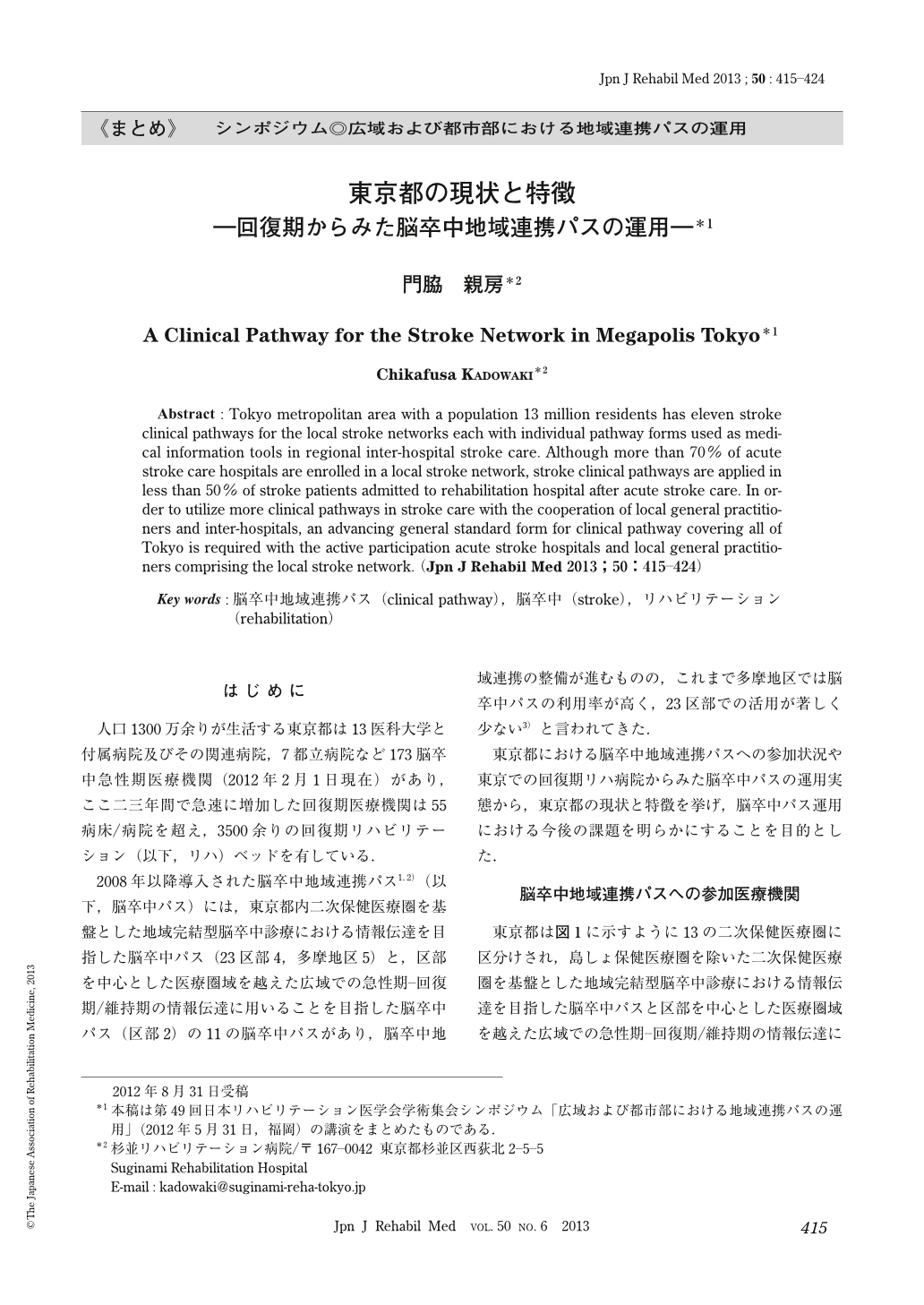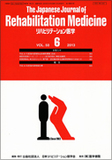Japanese
English
- 販売していません
- Abstract 文献概要
- 1ページ目 Look Inside
- 参考文献 Reference
はじめに
人口1300万余りが生活する東京都は13医科大学と付属病院及びその関連病院,7都立病院など173脳卒中急性期医療機関(2012年2月1日現在)があり,ここ二三年間で急速に増加した回復期医療機関は55病床/病院を超え,3500余りの回復期リハビリテーション(以下,リハ)ベッドを有している.
2008年以降導入された脳卒中地域連携パス1,2)(以下,脳卒中パス)には,東京都内二次保健医療圏を基盤とした地域完結型脳卒中診療における情報伝達を目指した脳卒中パス(23区部4,多摩地区5)と,区部を中心とした医療圏域を越えた広域での急性期-回復期/維持期の情報伝達に用いることを目指した脳卒中パス(区部2)の11の脳卒中パスがあり,脳卒中地域連携の整備が進むものの,これまで多摩地区では脳卒中パスの利用率が高く,23区部での活用が著しく少ない3)と言われてきた.
東京都における脳卒中地域連携パスへの参加状況や東京での回復期リハ病院からみた脳卒中パスの運用実態から,東京都の現状と特徴を挙げ,脳卒中パス運用における今後の課題を明らかにすることを目的とした.
Abstract : Tokyo metropolitan area with a population 13 million residents has eleven stroke clinical pathways for the local stroke networks each with individual pathway forms used as medical information tools in regional inter-hospital stroke care. Although more than 70% of acute stroke care hospitals are enrolled in a local stroke network, stroke clinical pathways are applied in less than 50% of stroke patients admitted to rehabilitation hospital after acute stroke care. In order to utilize more clinical pathways in stroke care with the cooperation of local general practitioners and inter-hospitals, an advancing general standard form for clinical pathway covering all of Tokyo is required with the active participation acute stroke hospitals and local general practitioners comprising the local stroke network.

Copyright © 2013, The Japanese Association of Rehabilitation Medicine. All rights reserved.


